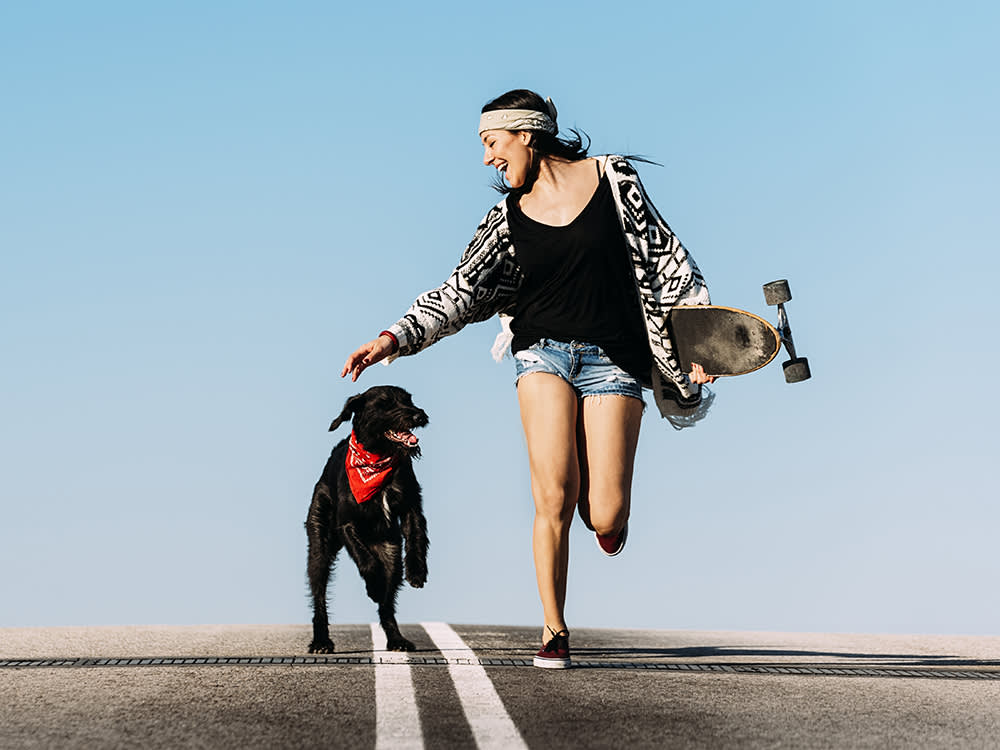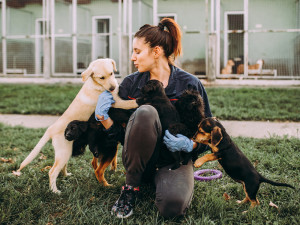Pick Your New Pet Like A Pro
How to find the (next) love of your life.
Choosing a dog — whether adopted or from a breeder — is a big deal. The right decision is the difference between an uneasy relationship and a perfect match (no pressure!). Many people choose a dog without much reflection, and honestly, a lot of the time, things work out fine. Sometimes, though, a combination of unfortunate choices and bad luck leads to trouble. Whether it’s an incompatibility issue or serious behavioral problems, a mismatch can get in the way of the companionship we seek from dogs.
What to Look for When Choosing a Dog
The first questions you should ask a shelter worker, foster parent, or breeder is about a dog’s temperament. If the latter, ask about the behavior of the puppy’s parents: What would mom or dad do if a child took away their toy, if they met a strange dog on the street, or if a strange man went in for a hug. If you’re adopting, ask if the shelter knows what the dog’s backstory is. Information on parentage can be hard to come by, especially for adolescents and adults, but you may be surprised to find out that some specifics are known.
And while it’s prudent to consider temperament tests or other behavioral assessments, I wouldn’t accept them as gospel. A recent study of the value of such tests performed in shelters found that of the many things they measured, only fear and friendliness had any predictive value once the dog was placed in a home. Still, we can’t pretend they’re pointless, either. Surely it’s better to do some sort of evaluation rather than choose a dog based on looks.
It bodes well when a dog solicits play or responds to your attempts to play. A playful dog in a strange situation with an unfamiliar person has not been shut down by fear or stress, and that’s good. There are plenty of scared, stressed dogs who make wonderful pets and are loved beyond measure, but let’s face it, dogs who don’t chronically suffer from either of these negative emotions have advantages. One study showed that dogs who responded rather than ignored people’s attempts to play with them were more likely to be adopted. This suggests that playfulness already influences adoption, whether we consciously know it or not.
Enjoying petting and seeking close physical contact are great signs, but not deal breakers if dogs aren’t immediately into it. When they’re in a strange environment, it’s natural for them to want to sniff around and explore a bit. However, while an instant desire for petting is not essential, later on, once they’ve calmed down, it’s a reasonable expectation.
Speaking of calming down, pay a lot of attention to whether or not a dog is capable of doing so, and how long it takes. There’s no problem with dogs who get excited. Perhaps they’ve been in a kennel for a long time and are short on exercise and social contact. Naturally, they are thrilled to greet you and run around a new place. Still, a dog who shows no signs of getting over that initial arousal and excitement within a few minutes may struggle with self-control in a lot of situations, and that’s not ideal in a pet dog.
Whether the dog leans toward being playful or toward wanting physical contact, it’s smart to choose a dog who engages with you. Exactly how they do that and what appeals to you personally are both matters of individual choice, but it’s important that they express an interest. Otherwise, you may be swimming upstream in trying to build a strong relationship and to train the dog.
It’s also important to evaluate a dog’s trainability by observing how quickly they learn a new behavior and how interested they are in the process. Teaching a dog to sit or lie down, to leave a piece of food on the ground, or to touch a target stick are a few great options for assessing trainability. A dog who can be trained demonstrates focus and attention, and an interest in you or in food (or perhaps both).
It’s promising when a dog recovers quickly from being startled by a loud noise, such as a book dropped on the floor. If a dog gets scared and hides for hours, that’s a problem. What you’re looking for is a dog who, though startled, takes only a moment to return to his normal emotional state. It indicates an ability to regulate their emotions and deal with the many little shocks that life brings.
What Not To Do When Choosing a Dog
Although there are a lot of things to do in order to choose a dog who is a good match for you, you also need to know what not to do:
For starters, appearances can lead humans astray: It’s unwise to pick a dog because they look like one you used to love. That brown spot shaped like a crescent moon right above their tail is not the trait that made your angel dog from childhood so angelic. Ditto for the color of its eyes, the tendency for one ear to be up and the other down, or their endearingly comical leggy proportions.
Don’t pick a dog out of pity; it’s not the best way to start a relationship. Remember, you are giving a home to one dog no matter which dog you choose, so choose the one you really want. Don’t rush into it or acquire a dog on impulse. It makes things harder on everyone if you bring a dog home when you are not ready emotionally, financially or logistically. Don’t buy from a pet store or any place that gets dogs from puppy mills. If you do, you are supporting a system that harms dogs. By adopting or buying a dog from elsewhere, you're decreasing the demand for dogs breed through exploitative practices.
If you are planning on welcoming a puppy rather than an adolescent or adult dog, there are a couple of extra “don’ts” to consider: Don’t pick the puppy who is off by himself in the corner while the others tumble around together. That “lone wolf” sort of puppy may be endearing and pull at your heart, but they are not exhibiting normal social behavior. The dog who does not interact will be less likely to build strong connections with you or with other dogs, and far more likely to have serious behavior problems that will distress you and your family down the road.
Similarly, resist the temptation to pick the puppy who is running over everyone and showing no self-control or respect for boundaries. Such “mack truck” puppies are likely to be that way throughout life, and it’s not a trait that’s fun to live with. Lack of impulse control can make training, relationships and daily life challenging beyond description.
There are many, many dogs out there — in shelters and rescue groups (including breed rescue), and from responsible breeders — who could be a great friend as well as a family member you can’t imagine life without.




